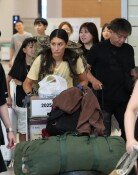[Editorial] Quality vs. Quantity in unemployment
[Editorial] Quality vs. Quantity in unemployment
Posted July. 21, 2000 20:24,
The latest figures from June show the number of jobless stood at 793,000 and the unemployment rate at 3.6%, the lowest it has been since the economic crisis that necessitated the International Monetary Fund (IMF) bailout. The drop in the unemployment rate, which reached 8.6% in February, is attributed to the continued economic recovery and measures taken by the Ministry of Agriculture and Fisheries and the Ministry of Construction, as well as seasonal trends related to the upcoming harvest. Learning that the unemployment rate will likely be harnessed at around 4% has eased a massive burden on our society, which has been gripped by anxiety throughout the economic crisis.
As we have achieved our first priority, lowering the jobless rate through employment policies, it is now time to take a further step in a new direction to improve the quality of employment. Even as the economy heads steadily towards a full recovery, the employment market has yet to shake off the recession jitters. The employment rate for migratory workers, part-timers, sub-contract workers and temporary staff, all of which are considered non-permanent employees, stood at 30-50% prior to the economic crisis. It has now risen to 53%, or more than half of all employed individuals.
Although this could be attributed to the efforts to provide greater flexibility in the physical labor market, if the trend continues, it will in the end lead to a greater gap between the "haves" and the "have-nots." Such a gulf could lead to social instability. The government should join forces with private enterprises to formulate measures that will grant temporary laborers rights and protect their efforts to maintain a decent standard of living.
The rising number of long-term unemployed individuals whose standard of living has fallen below poverty level is yet another issue that must be addressed. The number of those who have been unemployed for over one year has increased by 5,000 in just one month. As of June, the long-term unemployment rate stands at 2.5%, or approximately 20,000 people. With long-term unemployment, the cost of rescue efforts rises as work-training programs lose their effectiveness. The government must waste no time in preventing this phenomenon from firming its grip on our society.
In comparison to the decline in the number of unemployed in their 20s and 30s, the number of unemployed in their 40s and 50s has remained steady. As the older age groups are less familiar with current information technology, they are unlikely to be hired by start-up venture businesses. To worsen their situation, "old-school" Korean enterprises have not fully adopted the upper-management hiring practice, again presenting a barrier to the middle-aged. The government`s effort to reduce unemployment by doling out public work projects should be redirected to focus on training the middle-aged unemployed to re-enter the white collar job market based on their education.
As for the employment rate for women, Korea still lags behind at 49.3% in comparison to the 60% recorded in the U.S. and other developed countries. To reflect the per capita GNP achievement of Korea, the government should find ways to create further job markets for women and to establish policies that help end discrimination against women in the work force.
By regions, Seoul recorded the lowest unemployment rate at 3.9%, followed by 5.9% for Pusan and 5.2% for Kwangju. The government should also concentrate on closing regional gaps through local economic recovery efforts and unemployment countermeasures.






![노동신문 개방? 노동신문 서버는 개방을 견뎌낼까?[주성하의 ‘北토크’]](https://dimg.donga.com/c/138/175/90/1/wps/NEWS/IMAGE/2025/12/26/133032325.1.jpg)
